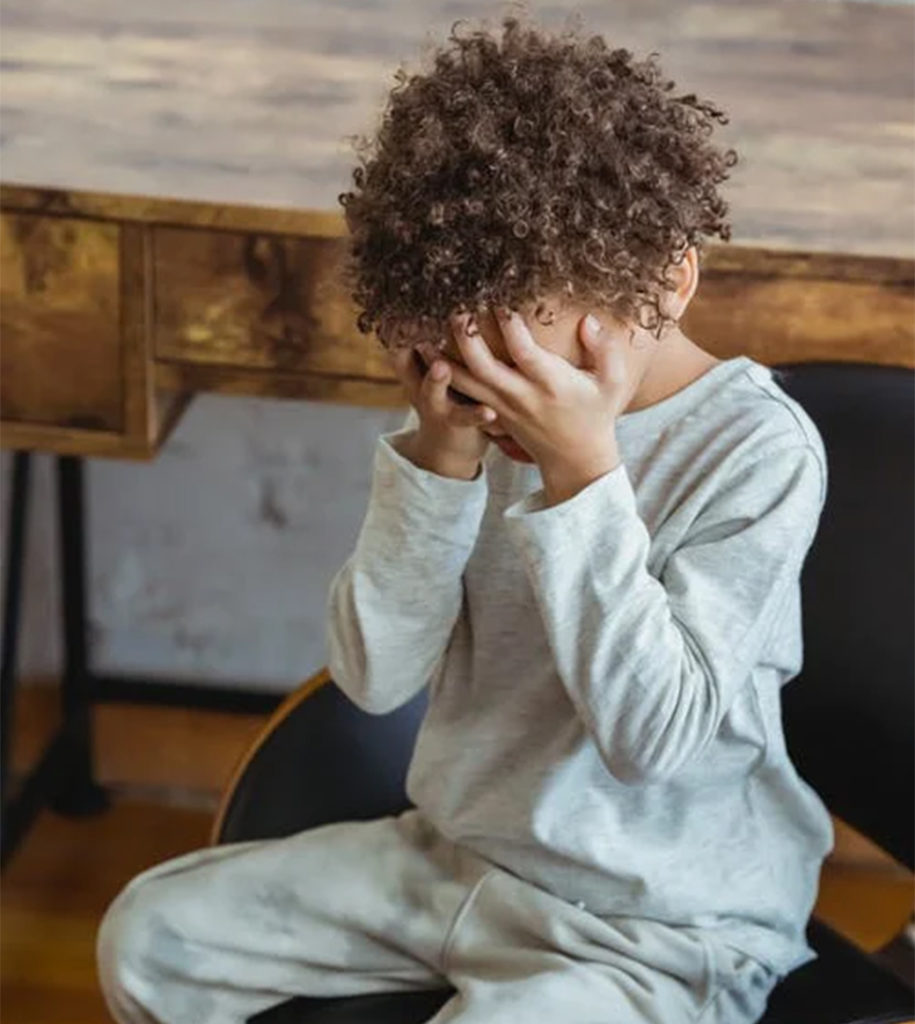Children and Divorce
Divorce is common in the United States, with nearly 50% of all marriages ending in divorce. In many instances, children of divorce tend to feel the effects the most, given their inability to process and cope with continued stress.
They have a particularly hard time learning to live without one of their parents, which in many cases is the father. Research has shown that, historically, fathers are less likely to get custody of their children, although this trend is changing.
Data show that, depending on the state, fathers were awarded custody an average of 35% of the time in 2018.
In some states, this figure was as high as 50%, and in others, it was as low as 21%. Although these are low percentages, they are far higher than in the past. For example, in 1994, fathers were awarded custody only about 16% of the time.

Home » Children & Divorce – Effects of Divorce on Children, How to Help
The Effects of Divorce on Children
How does a child’s age affect his or her reaction to divorce?
How does divorce affect kids in school?
How does living in a single-parent household affect children?
How to Help a Child Through a Divorce
How to Tell Kids About a Divorce
The Effects of Divorce on Children

Financial Security
Divorce brings an increased likelihood of a child living in poverty. Divorce strains a family’s resources and can result in both parents and their children living near or below the poverty line. Instead of one house to run, the family now maintains two, with two sets of bills to match.
Mental Health
Children of divorce are at high risk of mental health problems. Incidences of depression and anxiety increase when a child’s parents go through a separation or a divorce. They may lack the emotional security they felt prior to the divorce and feel shame around kids whose parents aren’t divorced.
Studies show that when the woman is the custodial parent, she’s likely to lose anywhere from 25% to 50% of her pre-divorce income. Custodial fathers also suffer financial losses but may recover more quickly than women.
Physical Health
Divorce can have negative effects on children’s physical health.
Documented conditions a child may deal with include:
- Asthma attacks
- Headaches
- Speech problems
- Stomach and digestion issues
Social Problems
Children of divorce may also have to contend with social challenges in school and with friends. Children of divorce often:
- Perform poorly at school
- Exhibit behavior that alienates friends
- Lose interest in extracurricular activities
- Become withdrawn
How does a child’s age affect his or her reaction to divorce?
A child’s reaction to a divorce depends largely upon his or her age. Although a child’s individual personality and history play a role, the majority of children follow age-related patterns of behavior when their parents separate.
Some experts claim that school-aged children between five and 13 years old tend to have the toughest time with divorce, especially kids around 11 years of age. At this time in their lives, they may find it challenging to understand others’ motivations and often interpret others’ actions as personal attacks.
Yet other experts believe that children between the ages of two and four have the most difficult time adjusting to divorce.
Babies & Toddlers
Babies and toddlers can recognize tense situations. Although they don’t understand what is happening, they still react to what is going on around them. When there is friction or stress in the home, babies and toddlers may become more irritable, timid, or clingy, or they may experience delayed developmental milestones.
Preschoolers
Preschoolers do not understand the concept of divorce and may believe they are the cause of the marital problems. This can be confusing for the child and affect the child’s confidence. The upheaval of divorce may interfere with the development of social skills. Some children this age may regress developmentally.
Elementary School (Six to 12 years old)
Younger elementary school-aged children may not completely grasp divorce, but they sense there is a serious problem. They fear losing a parent and crave a familial bliss that no longer exists. The older they are, the more they begin to realize the wider implications of divorce and may begin to blame one or both parents.
Teenagers
Divorce is no mystery to teenagers. If they’ve been living in a house of strife for an extended period of time, they may actually be relieved that their parents are separating. As they prepare to enter the adult world, teens want a safe and calm household.
Many teens act out, using the divorce to justify risky behavior, such as drinking or smoking.
How does divorce affect kids in school?
During their parents’ divorce, it is not uncommon for a child’s grades to suffer, their homework to be neglected, and their attendance to decline. They may stop participating in class or school activities.
Although poor performance in school can be attributed to many factors, a 2019 study published in Sociological Science showed that “children whose parents divorced have, on average, lower levels of educational attainment than children whose parents stay together.”
Researchers suggest that family and economic instability are key factors in a child’s educational attainment.
Parents can mitigate the negative effects of divorce on children’s school performance by acknowledging, discussing, and working through the issues.
How does living in a single-parent household affect children?
Children of single-parent households face significant challenges. Money is often much tighter than when two parents are in the home, and the benefit of having the support and guidance of two authority figures is missing.
Research has revealed that children living in a single-parent home, especially a low-income home, are more likely to have a lower socioeconomic status as an adult. They may live at or below the poverty line. They also have an increased risk of being incarcerated by the age of 28.
However, children living with one parent can be and are successful under the right conditions.
How to Help a Child Through a Divorce
The key to helping children during divorce is for the parents to accept the process and commit to going through it. It’s not always a wise idea for parents to stay together simply for the benefit of the children. Doing so often subjects children to ever-increasing hostility, as the problems between the parents are not likely to be resolved under this approach.
As the divorce proceeds, the likelihood of conflict is high. It’s understandable and common, but it should never affect the children. Parents should refrain from arguing in front of their children.
How to Tell Kids About a Divorce
Children deserve as much truth about the divorce as they can understand. Being open and honest preserves the trust between parents and children and requires the parents to abstain from blaming or criticizing one another when they talk to their children about the separation.
It’s not an easy talk to have, and it consists of more than one conversation. Depending on the age of the children, there may be a lot to discuss. The children will likely have a lot to say, which makes it important to make them feel like their voice counts.
While they’re sharing, pay close attention to what they say and how it makes you and your spouse feel or react. Take careful note of how they react to everything you say. As their parents, you’ll know what their reactions mean and how to address them.
Most importantly, let them know they are not to blame. It’s easy to understand how a child may think he or she is the cause of the breakup. Let your child know that it’s mommy and daddy who are having problems.
Share all of the appropriate specifics with children early on. In addition to love and attention, they need details regarding how life is going to change. These details include:
- Who’s living where
- Schooling changes
- Visitation
- Family social activities, such as church, clubs, and/or sports leagues
It’s better for children to know about these changes sooner rather than later so they have time to adjust.
Co-Parenting Tips
Co-parenting includes sharing custody as well as the responsibility and privilege of making decisions for the children.
According to researchers, successful co-parenting requires open communication and respect—the same things often missing in distressed marriages.
If co-parenting is not possible because you and your former spouse cannot communicate effectively, an alternative option called “parallel parenting” has unique benefits for each person.
Parallel parenting allows parents to reduce conflict and respect each other’s boundaries while maintaining independent parenting strategies.
Tips for effective co-parenting:
- Stick to the agreement.
- Communicate openly.
- Be civil in front of the kids.
- Be civil in private when possible.
Co-parenting can work under the right circumstances. There are times, however, when parallel parenting would be preferred. When conflict or violence characterizes the interactions of the parents, it may be more appropriate to seek alternatives to co-parenting.
What can teachers and guidance counselors do?

Teachers and guidance counselors are in a unique position to help children through the effects of divorce. In many cases, they spend more waking time with children than their parents do.
School professionals should be in the habit of keeping their divorced students’ parents abreast of issues the students have, and together, they can work to find solutions.
Parents should see school professionals as a resource. Informing teachers and counselors of life-altering events in a child’s life will help the school understand problems the child may be having.
The school is in a unique position of providing a neutral ground for a child to enjoy the presence of both of their divorced parents. Therefore, schools should make an effort to reach out to both parents about school events and activities instead of just one.
When communicating with divorced families, whether with the student or the parents, school professionals must recognize, respect, and be sensitive to the diverse representation of their student body. Contacting family members outside of the classroom can be a sensitive issue. Never assume that everyone in the same household is family or has the same last name.
Fortunately, there are ways to ensure respectful communication with divorced families, including:
- Offering separate parent-teacher meetings or conferences
- Making phone calls on a regular basis
- Sending home written information for the nonresidential parent when allowed
Educators have the ability to create safe and welcoming environments for children of divorce. Teachers can present lessons to their students that:
- Foster an appreciation for diversity
- Encourage communication
- Increase self-worth
- Impart tools for coping with difficult situations
The goal is to provide a support system for these children so that they can continue their studies successfully. Making the school a safe and welcoming environment for all children, no matter their situation, is a great place to start.
Outside of the classroom, counselors give students a safe, private place to express themselves and seek answers. It’s a fantastic opportunity for counselors to develop trust and lead children of divorced families to a life of higher self-esteem and goals.
Therapy and Counseling During a Divorce
The normalcy of divorce in no way diminishes its potential negative impact on children’s lives. Professional counselors and therapists are available to help children through the problematic issues of divorce in a controlled setting away from emotional spaces, such as home or school. They even offer sessions online.
Although most kids likely would benefit from some sort of divorce therapy, not all have a dire need of it. Children who may benefit are those who have a particularly hard time with the divorce and can’t seem to function at the level they did before. They may exhibit the following types of behaviors or signs:
- Continued somber mood or extreme, persistent sadness
- Deteriorating performance at school
- Troubled friendships
- Loss of appetite
- Obsession with or exaggerated fear of death
- Uncharacteristic rudeness
- Aggressive behavior
Each of these symptoms can warrant counseling. Therapy addresses issues specific to the child, and counselors seek to provide children with tools to overcome the fear, confusion, and self-doubt that can accompany divorce.
You can find a family therapist through the Association of American Family and Marriage Therapy’s therapist locator. Both have extensive lists of licensed professionals who can support children of divorce.

